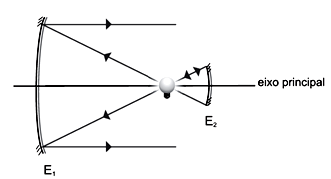(G1 - CP2 2016) Em tempos de escassez de água, toda medida de economia é bem vinda. Num banho de 15 minutos com chuveiro aberto são gastos cerca de 135 litros de água. Daniel resolveu reduzir seu banho para 9 minutos, obtendo assim uma economia de água a cada banho.
Se Daniel tomar apenas um banho por dia, em um mês ele terá economizado (considere 1 mês como tendo 30 dias):
Questões relacionadas
- Química | 1.3 Classificação Periódica
(UEFS)

A Tabela Periódica pode ser usada para organizar e lembrar propriedades com base nos números atômicos e nas configurações eletrônicas, como o tamanho do átomo, a energia de ionização e a densidade, entre outras. Os elementos químicos em um grupo apresentam similaridades, de modo geral, mas apresentam também tendências à medida que se observam suas propriedades em um grupo ou de um grupo para outro. Algumas das propriedades físicas dos metais alcalinos são apresentadas na tabela e, a partir da análise delas, é possível verificar algumas tendências que ocorrem com os elementos químicos desse grupo da Tabela Periódica.
Uma análise dessa tabela e da Tabela Periódica dos elementos químicos permite concluir:
- Língua Portuguesa - Fundamental | 4.02 Conto
Leia os contos a seguir e responda à questão.
― Eu não te amo mais.
― O quê? Fale mais alto,
A ligação está horrível!
(FURTADO, J. Os Cem Menores Contos Brasileiros do Século. São Paulo: Ateliê Editorial, 2004. p. 43)
A VIDA
É UM JOGO DE APARÊNCIAS
Num suspiro
vislumbra dois vazios:
começo e fim.
(JATOBÁ, R. Os Cem Menores Contos Brasileiros do Século. São Paulo: Ateliê Editorial, 2004. p. 43)
No primeiro conto, a palavra MAIS serve para enfatizar as ações de amar e falar. Sintaticamente, esse vocábulo cumpre qual função?
- Química | 4. Química Ambiental
A decomposição de material orgânico em meio anaeróbio resulta na produção natural de gás metano, CH4, e dióxido de carbono, CO2, como mostra a equação 1. A queima de combustíveis fósseis, como o gás butano, resulta na formação de dióxido de carbono, CO2 e água, H2O, como mostra a equação 2.
Equação 1:
_(4).png)
Equação 2:
_(1).png)
Analisando as duas equações acima, em relação ao efeito estufa e ao aquecimento global, é correto afirmar que:
- Língua Portuguesa - Fundamental | 8.1 Frase, Oração e Período
Texto para a questão. Bom mesmo foi ter amigos. Não amigo de passos paralelos, com os quais eu só podia falar coisa pensada e repensada para não assustar. Gostoso foi ter plenitude de voz e atitudes. Falar do que quisesse, ter resposta para tudo e acreditar que tudo era possível, o mundo simples e aberto. Um dia eu precisava saber quem teria feito o trinquinho da portinha da casinha da lua. – Psssiu! – chamei. – Onde você se escondeu? Minha aranhinha não respondeu, nem botou a cara nos vãos das telhas. – Não gosto dessa brincadeira. Você sabe. Nada. – Vou contar até três: um, dois, três. Nem sinal. Apavorei-me. Olhos arregalados, revirei todos os cantos do telhado. Não a encontrei. Empurrei a porta e vi, achatada no batente, pequena, sem cara, sem pernas, seca, minha aranhinha. Só o corpinho estraçalhado grudado na madeira. Estremeci. Quis pegá-la para tentar ao menos abrir-lhe os olhos de dentro, mas, ao tocá-la, desfez-se em pó e uma rajada de vento espalhou-a por espaços desmedidos. Comecei a chorar. Não bastava. A tristeza não saía. Quis me morrer, não pude. Me morrer eu ainda não sabia. GUIMARÃES, Geni. A cor da ternura. São Paulo: FTD, 1994.
Das frases extraídas do texto A cor da ternura, é exemplo de frase nominal:
- Física | 4.2 Reflexão da Luz
(UEFS)

A figura representa o esquema simplificado de um holofote, construído com dois espelhos esféricos côncavos associados, para obter um feixe paralelo de luz cilíndrico com alta eficiência no aproveitamento da luz emitida por um pequeno filamento aquecido de uma lâmpada.
Considerando-se que os espelhos obedecem às condições de Gauss e sabendo-se que f1 e f2 são, respectivamente, as distâncias focais dos espelhos 1 e 2, é correto afirmar: